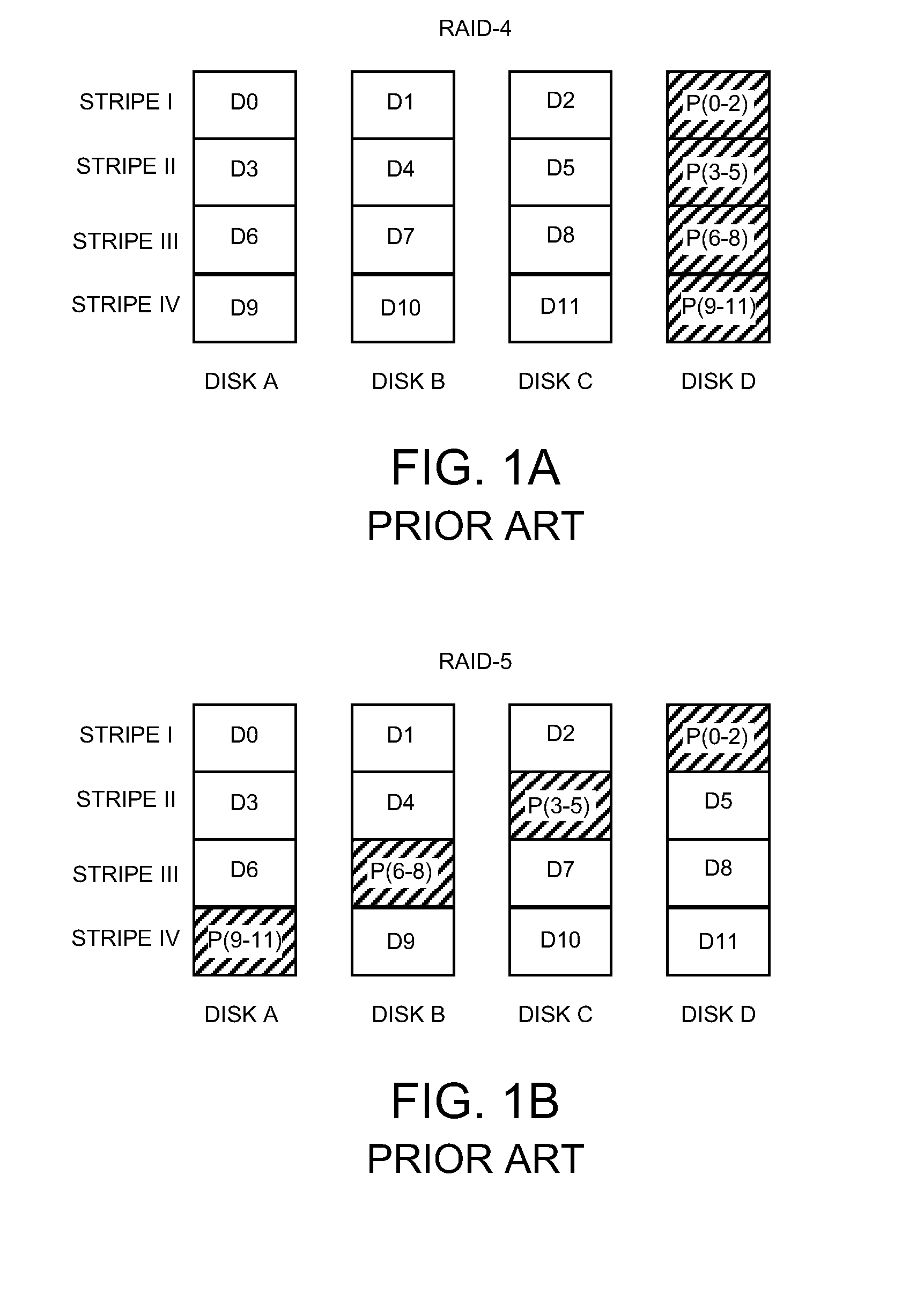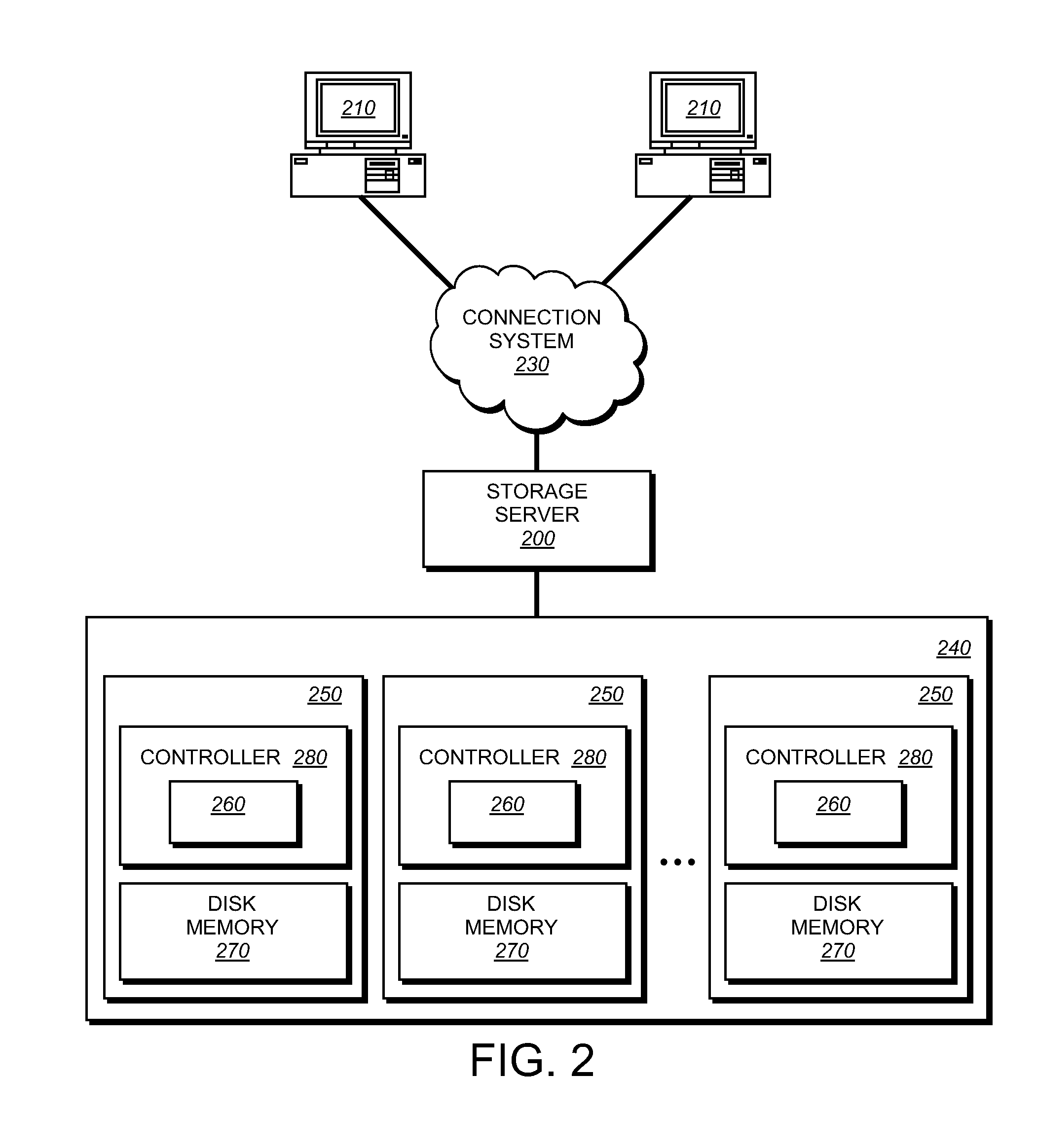System and method for optimizing write operations in storage systems
a storage system and write operation technology, applied in the field of storage systems, can solve the problems of data corruption or loss, affecting the overall system performance, rotation latency, etc., and achieve the effect of optimizing i/o operations, eliminating some rotation latency, and increasing the performance of storage servers
- Summary
- Abstract
- Description
- Claims
- Application Information
AI Technical Summary
Benefits of technology
Problems solved by technology
Method used
Image
Examples
Embodiment Construction
[0024]Embodiments of the present invention provide a method, system, and computer program product for optimizing I / O operations performed by a storage server operating on behalf of multiple clients to access and retrieve data on a plurality of storage devices, such as disks. Embodiments of the present invention zero free physical data blocks on the disks. When a client system makes an access request to the storage server to write new data, the storage server decodes the request and issues an internal command to write data to physical data blocks on one or more disks. Since physical data blocks to which new data are written have been zeroed, embodiments of the present invention eliminate the need for reading these data blocks to write new data. Additionally, embodiments of the present invention eliminate the need for reading old parity to compute new parity for a stripe in which one or more physical data blocks are modified. Instead, the storage server issues a command(s) to a disk t...
PUM
 Login to View More
Login to View More Abstract
Description
Claims
Application Information
 Login to View More
Login to View More - R&D
- Intellectual Property
- Life Sciences
- Materials
- Tech Scout
- Unparalleled Data Quality
- Higher Quality Content
- 60% Fewer Hallucinations
Browse by: Latest US Patents, China's latest patents, Technical Efficacy Thesaurus, Application Domain, Technology Topic, Popular Technical Reports.
© 2025 PatSnap. All rights reserved.Legal|Privacy policy|Modern Slavery Act Transparency Statement|Sitemap|About US| Contact US: help@patsnap.com



